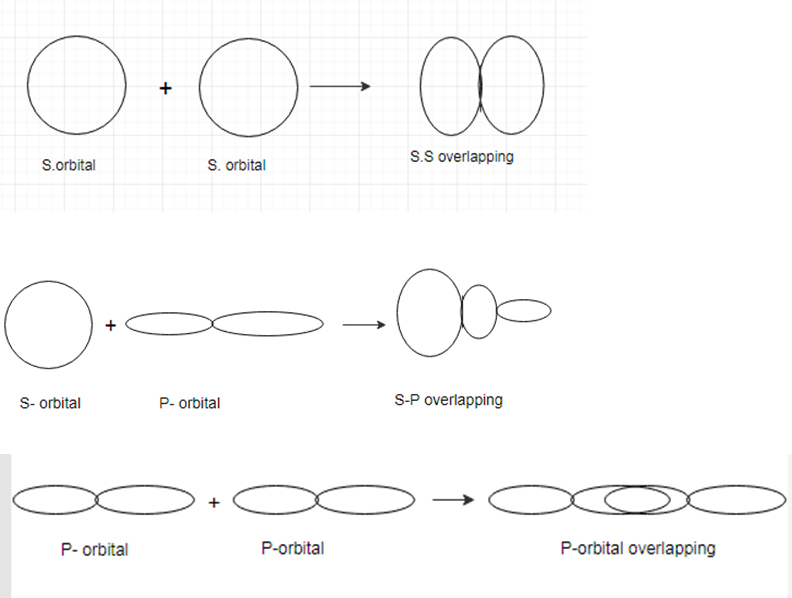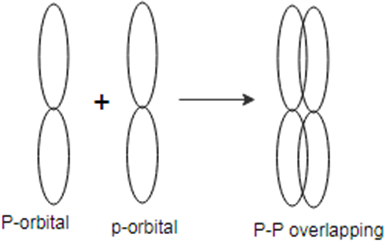
Chemistry: Structure and Properties
1st Edition
ISBN: 9780321834683
Author: Nivaldo J. Tro
Publisher: PEARSON
expand_more
expand_more
format_list_bulleted
Concept explainers
Question
Chapter 13, Problem 17E
Interpretation Introduction
Interpretation:
There are two types of covalent bond
Sigma bond bond
Sigma bond: A sigma bond is a covalent bond which is formed by the head on overlap of two atomic orbitals.

Bond:
A bond is a covalent bond which is formed by the side- to side overlap of two atomic orbitals.

Concept introduction:
bond form independently while bond always form with bond. Bond is stronger than bond. As size of atomic orbital increase the tendency of formation of bond decreases.
To determine:
The reason silicon form only single bonds with oxygen, but carbon, which is in the same family as silicon, forms double bonds with oxygen in many compounds.
Expert Solution & Answer
Want to see the full answer?
Check out a sample textbook solution
Students have asked these similar questions
>
You are trying to decide if there is a single reagent you can add that will make the following synthesis possible without any other
major side products:
1. ☑
CI
2. H3O+
O
Draw the missing reagent X you think will make this synthesis work in the drawing area below.
If there is no reagent that will make your desired product in good yield or without complications, just check the box under the
drawing area and leave it blank.
Click and drag to start drawing a
structure.
Explanation
Check
?
DO
18
Ar
B
© 2025 McGraw Hill LLC. All Rights Reserved. Terms of Use | Privacy Center | Accessibility
Don't use ai to answer I will report you answer
Consider a solution of 0.00304 moles of 4-nitrobenzoic acid (pKa = 3.442) dissolved in 25 mL water and titrated with 0.0991 M NaOH. Calculate the pH at the equivalence point
Chapter 13 Solutions
Chemistry: Structure and Properties
Ch. 13 - Determine what state this substance is in at 1 atm...Ch. 13 - Prob. 2SAQCh. 13 - Prob. 3SAQCh. 13 - Prob. 4SAQCh. 13 - Prob. 5SAQCh. 13 - Prob. 6SAQCh. 13 - Prob. 7SAQCh. 13 - Prob. 8SAQCh. 13 - Prob. 9SAQCh. 13 - Prob. 10SAQ
Ch. 13 - What is a phase diagram?Ch. 13 - Draw a generic phase diagram and label its...Ch. 13 - What is the significance of crossing a line in a...Ch. 13 - What is graphene? Why is graphene unique?Ch. 13 - Prob. 5ECh. 13 - What is a crystalline lattice? How is the lattice...Ch. 13 - Prob. 7ECh. 13 - Prob. 8ECh. 13 - What is the difference between hexagonal closest...Ch. 13 - What are the three basic types of solids and the...Ch. 13 - Prob. 11ECh. 13 - What kinds of forces hold each of the three basic...Ch. 13 - Prob. 13ECh. 13 - Prob. 14ECh. 13 - Prob. 15ECh. 13 - Prob. 16ECh. 13 - Prob. 17ECh. 13 - Prob. 18ECh. 13 - Prob. 19ECh. 13 - Consider the phase diagram for iodine shown here....Ch. 13 - Prob. 21ECh. 13 - Prob. 22ECh. 13 - Prob. 23ECh. 13 - Prob. 24ECh. 13 - Prob. 25ECh. 13 - An X-ray beam of unknown wavelength is diffracted...Ch. 13 - Prob. 27ECh. 13 - Determine the coordination number for each...Ch. 13 - Prob. 29ECh. 13 - Molybdenum crystallizes with the body-centred unit...Ch. 13 - Prob. 31ECh. 13 - An atom has a radius of 142 pm and crystallizes in...Ch. 13 - Rhodium has a density of 12.41 g / cm3 and...Ch. 13 - Barium has a density of 3.59 g/cm3 and...Ch. 13 - Prob. 35ECh. 13 - Palladium crystallizes with a face-centered cubic...Ch. 13 - Prob. 37ECh. 13 - Identify each solid as molecular, ionic, or...Ch. 13 - Which solid has the highest melting point? Why?...Ch. 13 - Which solid has the highest melting point? Why?...Ch. 13 - Which solid in each pair has the higher melting...Ch. 13 - Which solid in each pair has the higher melting...Ch. 13 - Prob. 43ECh. 13 - Prob. 44ECh. 13 - Prob. 45ECh. 13 - Prob. 46ECh. 13 - The unit cells for cesium chloride and barium(ll)...Ch. 13 - Prob. 48ECh. 13 - Prob. 49ECh. 13 - Prob. 50ECh. 13 - Prob. 51ECh. 13 - Prob. 52ECh. 13 - Prob. 53ECh. 13 - Prob. 54ECh. 13 - Prob. 55ECh. 13 - Prob. 56ECh. 13 - Prob. 57ECh. 13 - The density of an unknown metal is 12.3 g/cm3 and...Ch. 13 - Prob. 59ECh. 13 - Consider a planet where the pressure of the...Ch. 13 - An unknown metal is found to have a density of...Ch. 13 - Prob. 62ECh. 13 - Potassium chloride crystallizes in the rock salt...Ch. 13 - Calculate the fraction of empty space in cubic...Ch. 13 - Prob. 65ECh. 13 - Prob. 66ECh. 13 - Prob. 67E
Knowledge Booster
Learn more about
Need a deep-dive on the concept behind this application? Look no further. Learn more about this topic, chemistry and related others by exploring similar questions and additional content below.Similar questions
- What is the name of the following compound? SiMe3arrow_forwardK Draw the starting structure that would lead to the major product shown under the provided conditions. Drawing 1. NaNH2 2. PhCH2Br 4 57°F Sunny Q Searcharrow_forward7 Draw the starting alkyl bromide that would produce this alkyne under these conditions. F Drawing 1. NaNH2, A 2. H3O+ £ 4 Temps to rise Tomorrow Q Search H2arrow_forward
arrow_back_ios
SEE MORE QUESTIONS
arrow_forward_ios
Recommended textbooks for you
 Chemistry for Engineering StudentsChemistryISBN:9781337398909Author:Lawrence S. Brown, Tom HolmePublisher:Cengage Learning
Chemistry for Engineering StudentsChemistryISBN:9781337398909Author:Lawrence S. Brown, Tom HolmePublisher:Cengage Learning Chemistry: Principles and PracticeChemistryISBN:9780534420123Author:Daniel L. Reger, Scott R. Goode, David W. Ball, Edward MercerPublisher:Cengage Learning
Chemistry: Principles and PracticeChemistryISBN:9780534420123Author:Daniel L. Reger, Scott R. Goode, David W. Ball, Edward MercerPublisher:Cengage Learning Chemistry & Chemical ReactivityChemistryISBN:9781337399074Author:John C. Kotz, Paul M. Treichel, John Townsend, David TreichelPublisher:Cengage Learning
Chemistry & Chemical ReactivityChemistryISBN:9781337399074Author:John C. Kotz, Paul M. Treichel, John Townsend, David TreichelPublisher:Cengage Learning Chemistry & Chemical ReactivityChemistryISBN:9781133949640Author:John C. Kotz, Paul M. Treichel, John Townsend, David TreichelPublisher:Cengage Learning
Chemistry & Chemical ReactivityChemistryISBN:9781133949640Author:John C. Kotz, Paul M. Treichel, John Townsend, David TreichelPublisher:Cengage Learning Chemistry by OpenStax (2015-05-04)ChemistryISBN:9781938168390Author:Klaus Theopold, Richard H Langley, Paul Flowers, William R. Robinson, Mark BlaserPublisher:OpenStax
Chemistry by OpenStax (2015-05-04)ChemistryISBN:9781938168390Author:Klaus Theopold, Richard H Langley, Paul Flowers, William R. Robinson, Mark BlaserPublisher:OpenStax Chemistry: The Molecular ScienceChemistryISBN:9781285199047Author:John W. Moore, Conrad L. StanitskiPublisher:Cengage Learning
Chemistry: The Molecular ScienceChemistryISBN:9781285199047Author:John W. Moore, Conrad L. StanitskiPublisher:Cengage Learning

Chemistry for Engineering Students
Chemistry
ISBN:9781337398909
Author:Lawrence S. Brown, Tom Holme
Publisher:Cengage Learning

Chemistry: Principles and Practice
Chemistry
ISBN:9780534420123
Author:Daniel L. Reger, Scott R. Goode, David W. Ball, Edward Mercer
Publisher:Cengage Learning

Chemistry & Chemical Reactivity
Chemistry
ISBN:9781337399074
Author:John C. Kotz, Paul M. Treichel, John Townsend, David Treichel
Publisher:Cengage Learning

Chemistry & Chemical Reactivity
Chemistry
ISBN:9781133949640
Author:John C. Kotz, Paul M. Treichel, John Townsend, David Treichel
Publisher:Cengage Learning

Chemistry by OpenStax (2015-05-04)
Chemistry
ISBN:9781938168390
Author:Klaus Theopold, Richard H Langley, Paul Flowers, William R. Robinson, Mark Blaser
Publisher:OpenStax

Chemistry: The Molecular Science
Chemistry
ISBN:9781285199047
Author:John W. Moore, Conrad L. Stanitski
Publisher:Cengage Learning
NEET Chemistry | Group 14 Carbon Family | Theory & Problem Solving | In English | Misostudy; Author: Misostudy;https://www.youtube.com/watch?v=enOGIrcHh54;License: Standard YouTube License, CC-BY